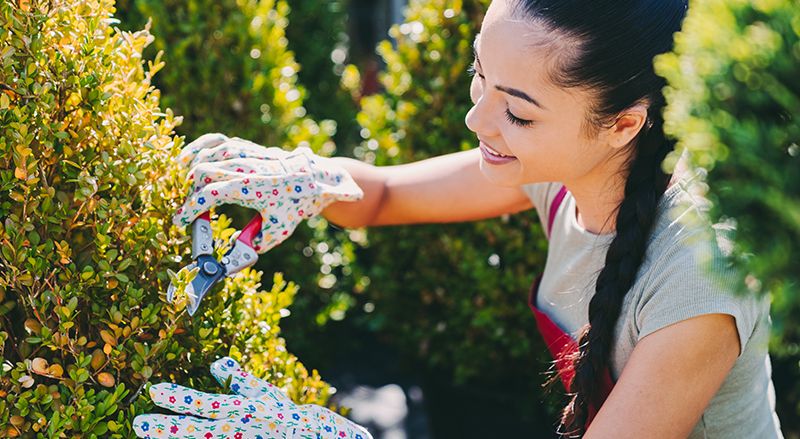Spring Tree & Shrub Pruning & Fertilizing Tips

Tree & Shrub Pruning & Fertilizing
Spring is upon us and nothing feels better than putting on gardening gloves
Spring is upon us and nothing feels better than putting on gardening gloves and heading outdoors to do spring clean up in flowerbeds while also pruning trees and shrubs in need of a trim. As a general rule, pruning should be done after the danger of severe cold has passed and before plants have leafed out. There are exceptions to that rule, though. Trees such as elms, birch, maples and boxelders should not be pruned until completely leafed out. If pruned sooner, they may produce sap excessively. Shrubs such as spireas, honeysuckles, lilacs and mockoranges should not be pruned until after they flower. If pruning just after flowering, they will flower again next spring.
Evergreens follow a different set of rules. The best time to prune an evergreen depends on the species of evergreens planted. In general the best time to prune the spruce is just before or after the new growth appears. The pine should be pruned when the new growth or candles have elongated but before needles have formed on the new growth. Junipers, Arborvitae and Yews can be pruned any time up to August 1. When pruning evergreens, always try to keep the natural shape. Don’t use hedge shears and don’t leave stubs. Always cut back the next bud or side branch and don’t prune it down to the wood or the branch will die off.
Spring is also the ideal time to start a feeding schedule for your trees and shrubs. We recommend fertilizing trees and shrubs in the early part of the growing season. This allows the plant to use the fertilizer when it is vigorously growing. Use a 20-15-15 fertilizer, or something with similar analysis numbers. Mature trees should be fertilized at least every year and younger trees in the spring. Mature shrubs, which have reached their desired size, do not require fertilizing. Fertilizing trees and shrubs in the fall is not recommended.
The best method of fertilizing trees and shrubs is to use a root feeder. While this is the most expensive method, it is the most effective because water carries the feed to the roots faster. Tree spikes can also be effective but it takes much longer for them to dissolve and work down to the plant roots. Fertilizer should be applied at the drip line of the plants being fertilized.
Follow these simple tips and your trees and shrubs will give you a great showing year after year.


